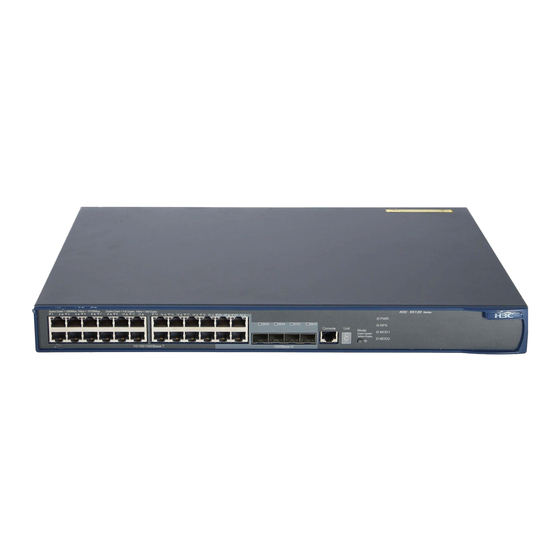HP 5120-24G EI TAA Manuel de configuration - Page 26
Parcourez en ligne ou téléchargez le pdf Manuel de configuration pour {nom_de_la_catégorie} HP 5120-24G EI TAA. HP 5120-24G EI TAA 39 pages. Hp 5120 ei switch series
Également pour HP 5120-24G EI TAA : Fiche technique (17 pages)

Step
1.
Enter system view.
2.
Set the IRF link down report
delay.
Configuring MAD
The following MAD mechanisms are available for detecting multi-active collisions in different network
scenarios:
LACP MAD
•
ARP MAD
•
These MAD detection mechanisms operate independently. You can configure all of them for an IRF
fabric.
Table 1
provides a reference for you to make a MAD mechanism selection decision.
Table 1 A comparison of the MAD mechanisms
MAD
mechanism
LACP MAD
ARP MAD
Configuring LACP MAD
When you use LACP MAD, follow these guidelines:
•
The intermediate device must be an HP device that support extended LACP for MAD.
If the intermediate device is in an IRF fabric, assign this fabric a different domain ID than the LACP
•
MAD-enabled fabric to avoid false detection of IRF split.
Command
system-view
irf link-delay interval
Advantages
•
Detection speed is fast.
•
Requires no MAD-dedicated
physical ports or interfaces.
•
No intermediate device is
required.
•
Intermediate device, if used,
can come from any vendor.
•
Requires no MAD dedicated
ports.
Remarks
N/A
The default IRF link down report delay is 4
seconds.
If your IRF fabric requires a quick
master/subordinate or IRF link switchover,
HP recommends setting the delay to 0
seconds.
Disadvantages
Requires an intermediate HP
device that supports LACP
MAD packets.
•
Detection speed is slower
than LACP MAD.
•
Spanning tree feature
must be enabled.
22
Application scenario
Link aggregation is used
between the IRF fabric
and its upstream or
downstream device.
For information about
LACP, see Layer 2—LAN
Switching Configuration
Guide.
Spanning tree-enabled
non-link aggregation IPv4
network scenario.
For information about
ARP, see Layer 3—IP
Services Configuration
Guide.
